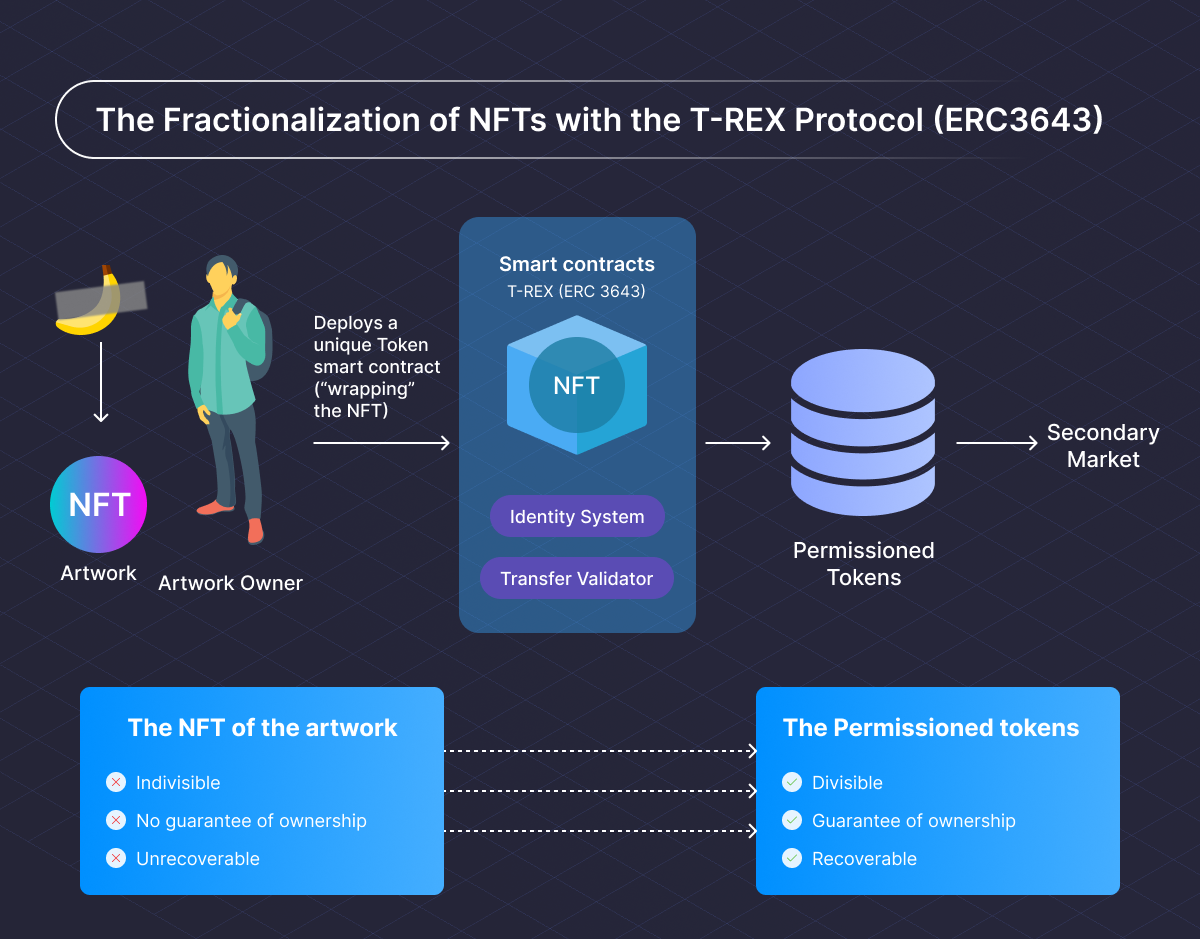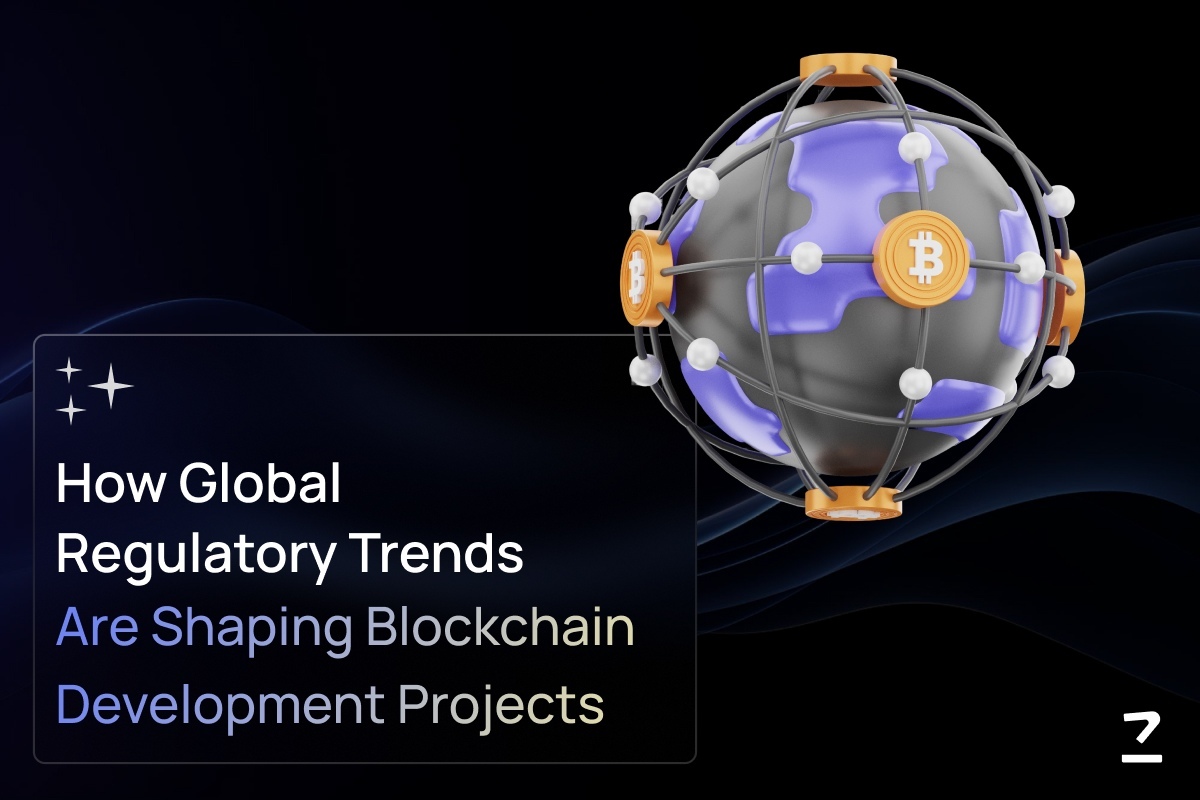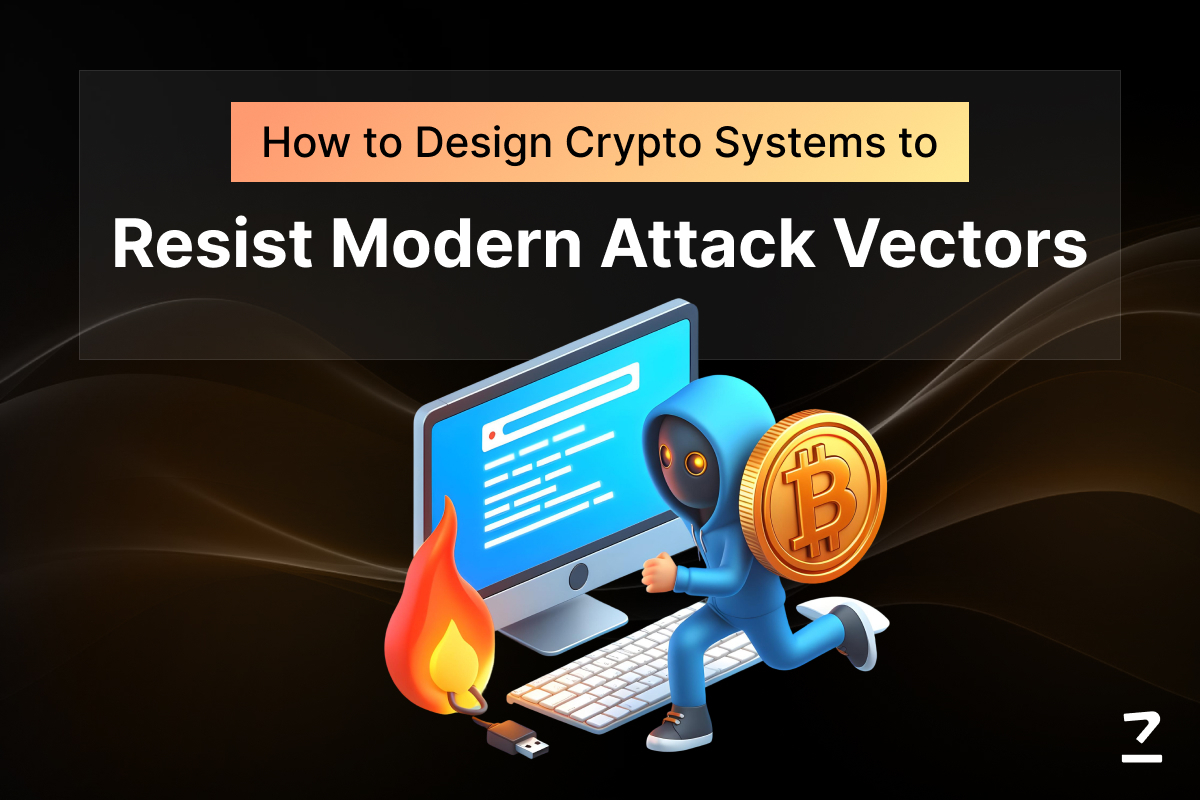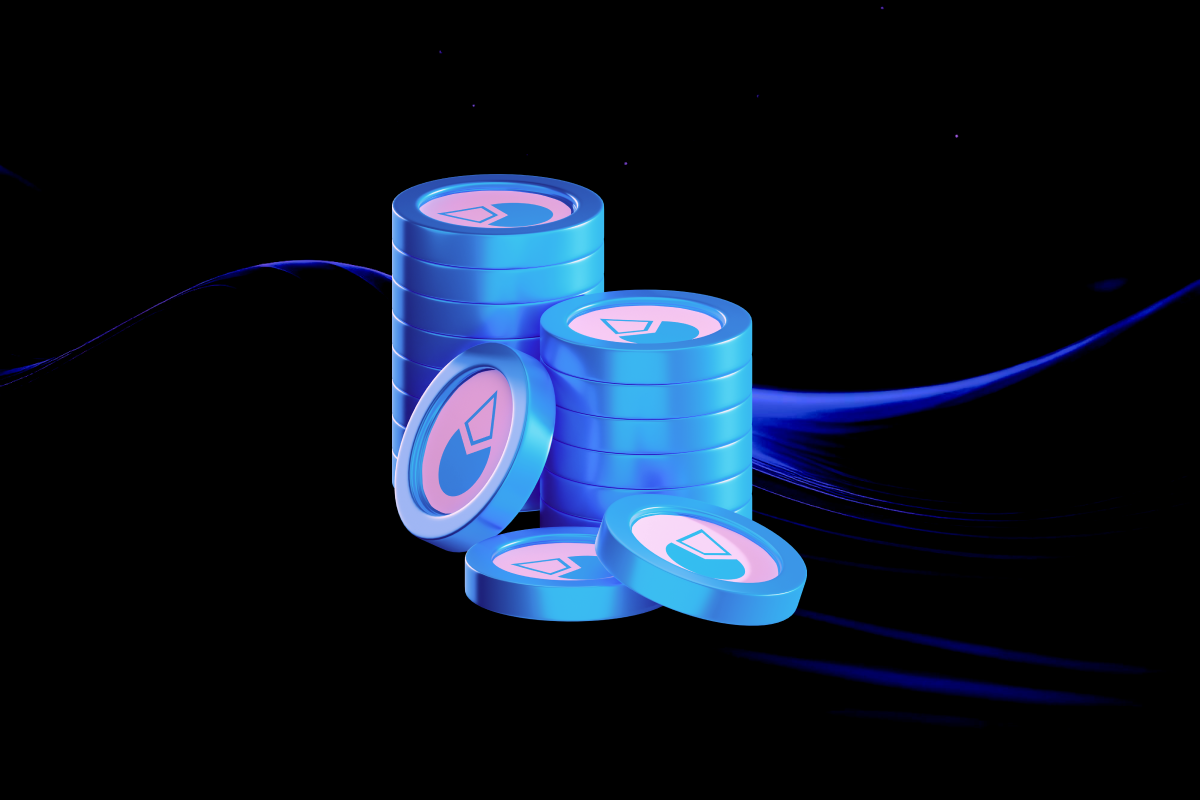SHARE THIS ARTICLE
The Role of NFTs in dApp Development: Opportunities and Challenges in the Digital Art and Collectibles Space

The digital art and collectibles market continues to witness explosive growth, driven by the innovation of Non-Fungible Tokens (NFTs). Revenue in this market is projected to reach a staggering $2,378.0 million in 2024, showcasing the immense value these digital assets hold. This highlights the increasing recognition of NFTs as a powerful tool for creators, collectors, and investors alike.
NFT development services are playing a pivotal role in shaping the future of art, entertainment, and commerce. By providing a unique digital fingerprint for each asset, NFTs facilitate verifiable ownership, scarcity, and provenance.

The convergence of NFTs and decentralized applications (dApps) is particularly noteworthy. DApps, built on blockchain technology, offer a decentralized, community-driven approach to application development. By integrating NFTs into these dApps, creators can open up new revenue streams, improve user experiences, and establish direct relationships with collectors and fans.
The potential implications of this convergence are substantial. NFT-powered dApps can allow artists to monetize their digital works in unprecedented ways while collectors can now own and trade unique digital assets with confidence. As technology advances, we can expect to see innovative applications across various industries, from gaming and entertainment to finance and real estate.
In this article, we will look into the opportunities and challenges presented by NFTs in the digital art and collectibles space. We’ll explore how dApp development can enhance ownership experiences, empower creators, and push the boundaries of artistic expression. However, alongside these opportunities, we'll also address the technical challenges developers face, from scalability concerns to security vulnerabilities.
Understanding NFT-Powered DApps
The convergence between NFTs and dApps is driven by the ability to create unique, verifiable digital assets that can be integrated into dApp ecosystems.
NFT-powered dApps harness the core principles of blockchain technology to enable new models of digital ownership, security, and monetization. Unlike traditional digital assets, which can be easily replicated or duplicated, NFTs are one-of-a-kind digital items with their own distinct identities and attributes. This scarcity and verifiability are the foundation for creating genuine digital ownership and value.
Within NFT-powered dApps, these unique digital assets can take on various forms, such as digital art, collectibles, virtual real estate, or in-game items. Owners of these NFTs can then engage in a range of activities, including trading, lending, or using them as collateral for decentralized finance (DeFi) applications.

Compared to traditional applications, NFT-powered dApps offer several distinct advantages.
-
Decentralized Ownership: By utilizing blockchain technology, NFT-powered dApps facilitate true digital ownership, where users can hold, transfer, and trade their assets without relying on a centralized authority.
-
Provable Scarcity: Each NFT is unique and verifiable, making sure that digital assets maintain their scarcity and value, unlike easily replicable digital items.
-
Interoperability: NFTs can be designed to be interoperable across different dApps and platforms, allowing users to seamlessly utilize their digital assets in various contexts.
-
Programmable Functionality: NFTs can be imbued with programmable features, such as royalty payments, usage restrictions, or automated actions, expanding their utility and versatility.
-
Transparent Transactions: All NFT-related transactions are recorded on the blockchain, providing a transparent and immutable record of ownership and provenance.
Opportunities for dApps with NFTs in Digital Art & Collectibles
Ownership & Provenance
One of the most significant opportunities dApp development platforms present lies in revolutionizing the ownership and management of digital art and collectibles. Traditionally, ownership of digital assets has been murky and easily replicated. NFTs, integrated with dApps, address this challenge by establishing a secure and verifiable system for ownership.
This is facilitated by the underlying technology – blockchain. Each NFT acts as a unique digital certificate stored on a blockchain, a distributed ledger that's tamper-proof and publicly accessible. This immutability means that once ownership of an NFT is recorded on the blockchain, it cannot be altered or deleted. Furthermore, the transparent nature of blockchain allows anyone to trace the complete ownership history of an NFT, providing undeniable proof of provenance.
This secure and verifiable ownership leads to exciting use cases within dApps. Consider a dApp functioning as a secure art gallery, where artists can tokenize their creations as NFTs. Collectors can then purchase these NFTs, confident in the authenticity and verifiable ownership of the artwork. Ownership details are permanently recorded on the blockchain, eliminating concerns about forgeries or replicas.
Furthermore, dApps can facilitate the creation and management of limited-edition digital merchandise. For instance, a musician could release a limited number of exclusive song NFTs on a dApp platform. Fans can then purchase and own these NFTs, potentially availing special benefits like access to behind-the-scenes content or exclusive online communities.
Fractional Ownership
Fractionalized NFTs have the potential to democratize access to high-value digital art within dApps, making it more accessible to a broader audience. This innovative approach involves dividing the ownership of a single NFT into smaller, tradable fractions, allowing multiple buyers to collectively own a portion of the digital asset.
From a technical standpoint, fractionalizing ownership on a blockchain using NFTs involves creating a new NFT for each fractional ownership unit. Each fractional NFT is then linked to the original NFT, ensuring that the ownership history and provenance remain intact. This process is facilitated through smart contracts, which automate the transfer of ownership and make sure that each fractional NFT is accurately represented on the blockchain.
For creators, fractionalized NFTs offer increased liquidity, as they can now sell smaller, more manageable portions of their digital art to a wider audience. This expands their potential customer base as well as provides a new revenue stream through the sale of fractional ownership units.
For collectors, fractionalized NFTs offer diversified investment opportunities, as they can now own a portion of multiple digital assets. This approach allows collectors to spread their risk and potentially increase their returns, as the value of each fractional NFT is tied to the overall value of the original NFT.

Gamification & Utility
NFTs can be harnessed to create interactive experiences and open up functionalities within dApps in the digital art and collectibles space. This gamification aspect of NFTs allows developers to create engaging and immersive experiences that drive user interaction and loyalty.
In the context of art-focused dApps, NFTs can represent in-game items, such as virtual art supplies or exclusive brushes, that enhance the user's creative experience. They can also grant access to exclusive content, such as behind-the-scenes videos or artist interviews, providing collectors with a deeper connection to the art and its creators.
Furthermore, NFTs can be used to represent participation rights in events, such as exclusive art exhibitions or live auctions. This allows collectors to engage with the art world in new and innovative ways, promoting a sense of community and exclusivity.
The gamified collecting experience can considerably increase user engagement and drive dApp adoption. By providing a sense of accomplishment and ownership, NFTs can motivate users to continue exploring and interacting with the dApp. This, in turn, can lead to increased user retention and a more loyal community, ultimately driving the growth and success of the dApp.
Challenges for dApp Development with NFTs
Scalability & Transaction Fees
The widespread adoption of NFT-based dApps is obstructed by the current limitations of blockchain technology in terms of scalability and transaction fees. The high transaction fees and slow processing times of traditional blockchain platforms can make it difficult for users to interact with NFTs, leading to a poor user experience and reduced adoption.
To address these limitations, developers are exploring potential solutions such as Layer 2 scaling and alternative blockchain platforms. Layer 2 scaling solutions, like Optimism and Polygon, aim to increase the scalability of blockchain transactions by processing them off-chain and then settling them on-chain. Alternative blockchain platforms, like Polkadot and Solana, offer faster and more cost-effective transaction processing.
User Experience & Onboarding
Creating a user-friendly experience for interacting with NFTs within dApps is a considerable challenge. Users need intuitive interfaces, simplified wallet integration, and clear educational resources to leverage NFTs to their full potential.
Tech companies can improve the user experience and onboarding process by providing clear and concise information about NFTs, their benefits, and how to use them. They can also develop user-friendly interfaces that simplify the process of buying, selling, and managing NFTs. Furthermore, companies can offer educational resources, such as tutorials, and guides, to help users understand the basics of NFTs and blockchain technology.
Regulation & Legal Uncertainty
The current state of NFT regulation is uncertain with varying laws and regulations across different jurisdictions. This legal uncertainty can make it difficult for developers to create NFT-based dApps that comply with all relevant regulations.
The potential impact of future regulations on the development and adoption of NFT-based dApps is substantial. If regulations become too restrictive, they can hinder innovation and reduce adoption. On the other hand, clear and consistent regulations can provide a framework for developers to create NFT-based dApps that are compliant and sustainable.
To tackle this, developers and tech companies must stay informed about changing regulations and adapt their strategies accordingly. This requires ongoing research and collaboration with regulatory bodies to make sure that NFT-based dApps are developed in a compliant and beneficial manner for all stakeholders.
Case Studies & Real-World Examples
Several successful dApps have leveraged NFTs in the digital art and collectibles space, showcasing innovative functionalities and addressing the available opportunities.
Foundation
This dApp platform focuses on empowering artists by providing a curated space for them to mint and sell their NFT creations directly to collectors. Foundation utilizes smart contracts for secure transactions and promotes a sense of community through artist profiles and interactive features. Moreover, Foundation prioritizes a user-friendly interface, making it an attractive option for both established and up-and-coming artists, addressing the user experience challenge, discussed in the previous section.
SuperRare
Known for its focus on high-quality digital art, SuperRare operates as an auction house built on the Ethereum blockchain. Artists can submit their work for review by a curation team, ensuring a high standard of artwork on the platform. This curated approach caters to collectors seeking unique and valuable pieces, addressing the opportunity for ownership and provenance. SuperRare also utilizes a gas-efficient auction system, which helps mitigate the scalability and transaction fee challenges faced by some dApps.
Decentraland
Taking the concept further, Decentraland is a virtual world powered by NFTs. Users can purchase and own parcels of land within this metaverse, utilizing them to build art galleries, museums, or even interactive games. These virtual spaces can then be monetized by charging entry fees or showcasing NFTs. Decentraland exemplifies the potential for NFTs to create immersive and interactive experiences within the digital art space. Notably, Decentraland utilizes the Polygon blockchain, known for its faster transaction speeds and lower fees compared to Ethereum, addressing scalability concerns.
Future Outlook
The future of NFT-powered dApps in the digital art and collectibles space is looking promising. We can expect to see further integration of NFTs with emerging technologies, such as the Metaverse. The ability to integrate NFT-based digital assets into immersive virtual environments will open up new possibilities for creators and collectors alike.
Moreover, the development of interoperable standards and protocols will allow NFT marketplaces to communicate and share data, creating a more connected and fluid ecosystem. This will allow users to freely move their digital assets across different platforms, improving the overall user experience.
At Codezeros, we are a leading expert in dApp development and a reputable NFT development company, offering a comprehensive suite of tools and resources to help build the next generation of digital art and collectibles platforms. Our team of experienced developers can guide you through every step of the process, from concept development to launch.
Contact us today for a free consultation.
Post Author

As a distinguished blockchain expert at Codezeros, Paritosh contributes to the company's growth by leveraging his expertise in the field. His forward-thinking mindset and deep industry knowledge position Codezeros at the forefront of blockchain advancements.
Build NFT-powered dApps with our development expertise at Codezeros
Democratize art collecting with NFTs! Build interactive NFT dApps with Codezeros. Our expert developers can help you build innovative solutions for the digital art & collectibles space.



